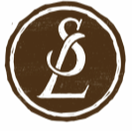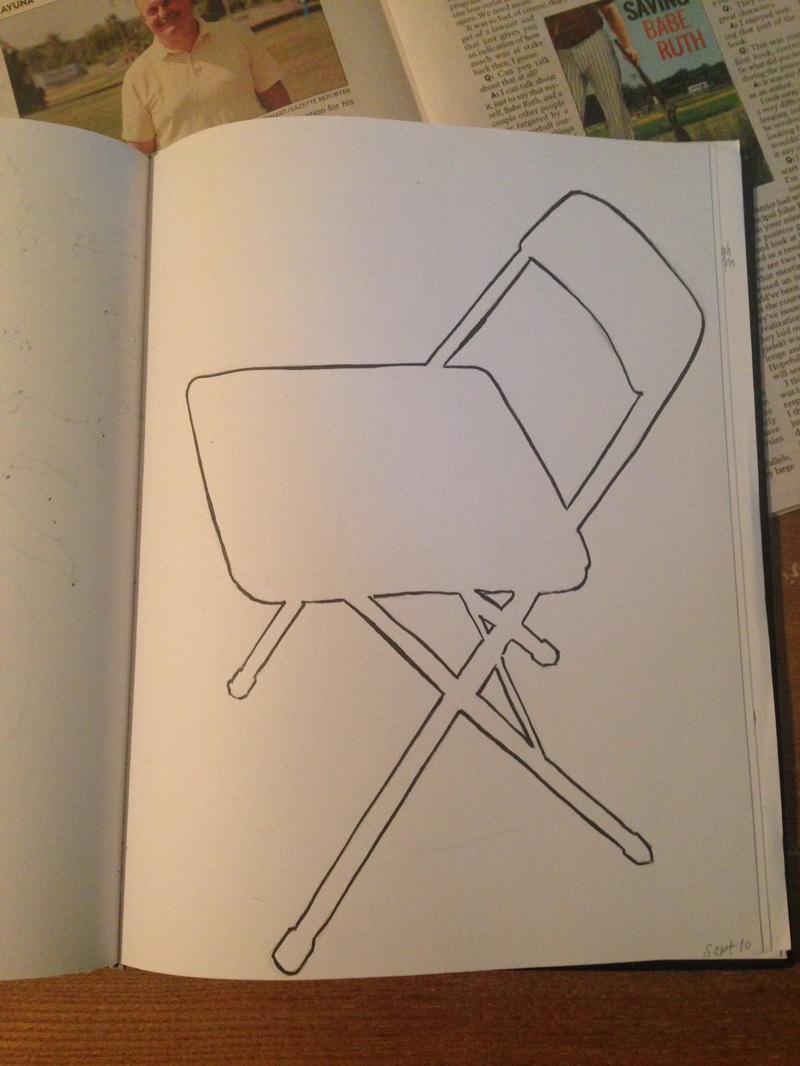|
I know I said that I would post my pictures of the exercises on Friday, but... I didn't. I'm posting them on Monday. Which I think might actually work better for me, so I'll probably stick with this. We can go over the principles of last week before diving into some new ones. (Maybe I should say "I", since I'm likely the only one reading and doing these exercises, but I enjoy pretending that you are there, because you are pretty great. :-) So, last week we did Negative Space drawings! I have an admission to make: I only got 4 of the 5 drawings done. So I get like a B- or something like that. But we're not grading this, so I guess I just get 4 drawings worth of learning instead of 5. Unlike last week's, I have decided to show my drawings here, but let me preface it first with this: while negative spaces were the focus, I found myself using many other drawing techniques I've learned to get these drawings to be (more or less) accurate. If your negative space drawings are less accurate than these, that is more than OK. Here and elsewhere on the internet there are other exercises and drawing techniques that can help you. If, however, your drawings are already more accurate than mine, well, good job! Why are you here again? Oh yes--nobody is too good for the basics. So, how did you do? If you actually did it, then that is wonderful in and of itself. If you feel like you can now draw better than before as a result of the exercise, that is even better. It was helpful for me too, and it wasn't new to me at all. You may notice when looking at my drawings, and maybe your own, that these are not nice, pretty drawings which you would want to hang on your wall. They look like what they are--learning exercises. Most of the drawings you will produce from the exercises I outline will probably look the same. Today's exercise, which is inspired by one outlined by Kimon Nicolaides in his book The Natural Way to Draw, will probably be the same. That is OK. On this topic Nicolaides said,  So I'm showing you the drawings I did as an exercise, but I do not expect you to do so as well if you feel self conscious about it. If people ask to look through your sketchbook and you feel uncomfortable about it, it is OK not to let them. If, however, you are OK with showing people your work, go ahead. Do what you are comfortable with--as far as showing your sketchbook goes, that is. I do hope, however, that some of these exercises are a little uncomfortable to do, because they are meant to help you to look and think in a new way--that is what drawing really is. And it isn't always comfortable. That is why I don't like one of the more popular types of drawing books. I'm talking about they type where it shows you how to draw an animal by starting with a structure of basic shapes and then breaking them down and adding details. The principle isn't exactly a bad one, as far as it goes, because that is one good method of drawing something. The problem is, it doesn't teach you how to do it--it does it for you. Some people are able to figure out the principle from using the book, but most (in my experience) are not--which is why this picture I've seen floating around various social media sites is funny. To most people, this is what the books actually look like--they outline what seems to be a simple framework, then throw on all the details without actually teaching anyone how they arrived at the final result. Unsurprisingly, people get frustrated with this type of instruction and conclude that they can't draw. I believe the problem here is two fold. One, the book does most of the work for the student, without explaining the principles used. Because of this they become dependent on the book, and can't produce any drawing that isn't broken down for them. Two, the whole idea of the book is based on the premise you don't need to work hard and produce some ugly exercise drawings before you produce a masterpiece--if you just follow the step by step instructions, you will have a beautiful drawing to hang on your wall! Sorry, friends. It just doesn't work that way. As our friend up-post, Kimon Nicolades said, Hmm, you're saying. You seem to be foreshadowing something here. I seem to be getting the impression that the next exercise will produce ugly drawings that I will want to hide from every living soul. Well, that may be true. But the principle is that you will come out of this with that much more of an understanding of how things actually look. You ultimately will be able to break down what you see into manageable parts, without even needing a book to do it for you. That is what we are aiming for. So what is this weeks exercise, you ask? This week, we are doing Blind Contour Drawings. These are pretty fun. Be excited. I first read about blind contour drawings in Drawing on the Right Side of the Brain, but Betty Edwards got the idea from--you guessed it--our friend Kimon Nicolaides, in his book The Natural Way to Draw. Though they both use this exercise, they have different ways of explaining how to do the exercise and different explanations about why it is helpful. I will attempt to summarize their ideas, as well as offering a few of my own. First, a summary of the exercise. What exactly is a Blind Contour Drawing? We all know what "blind" means--not being able to see. But what is a contour? A contour is an edge or an outline. We worked with edges last week in our negative space drawings. Here, we will focus on more than just where one object ends and the next begins. For our contour drawings we will also include corners and wrinkles. Not shadows or colors--just contours. Outlines. Edges. With those definitions, have you figured out what a Blind Contour Drawing is? It is a drawing where you draw the outline of your subject without looking at your paper. You focus completely on following the outlines and edges of the subject with your eyes while simultaneously drawing them--without looking away, even to check your drawing. You keep your pencil on the page, because if you lift it off you can't look back at the drawing in order to put it back in the right place. (In some versions of the exercise you are allowed to lift the pencil and look back at your drawing periodically. But we're not doing it that way. We're going all the way!) So, what is the point? For Nicolaides, a big part of this exercise is the conviction that your pencil is actually touching the thing that you are drawing--that you are pulling your pencil along the outlines of your actual subject. This essential to his definition of a contour--it is something you can actually feel, even if you are blind, as opposed to things you can only see, like a shadow or a color. If you are able to convince yourself that you actually feel what you are drawing, you will have a much more complete experience of that thing and what it actually looks like. For Betty Edwards, the important thing about this exercise (as with most of the exercises in her book) is the switch from Left brain to Right brain thinking. For Edwards, the left brain is satisfied to label something as, for example, a hand, and move on. When you stare at the hand and draw all the little details of it--the edges, the wrinkles, the outlines--the Left brain bows out and lets the Right brain do it's thing. (Since the publishing of Drawing on the Right Side of the Brain Psychologists have done more studies and now believe that the separation between Right and Left brain isn't as distinct as it was once supposed. However, I believe that for learning to draw it can be useful to think of that separation between types of thought, so I don't take issue with it as far as it goes. We're here to draw, not psycho-analyze ourselves.) So that is what Nicolaides and Edwards think of this exercise. But since this is my blog, I get to have an opinion too, limited though my experience may be compared to theirs. In addition to their ideas, I believe this exercise is about focus and patience. A blind contour drawing, according to both of them, must not be done quickly, but rather meticulously. Do we have the patience to look, really look, at one thing for 20 or 30 minutes? Do we have the patience to look at one stationary thing for even longer than that? I think I have less patience of this sort of thing than I did a couple of years ago. Having the patience to really look at something is essential to drawing well. To me, this exercise is about focusing. Its about the experience of really, deeply seeing what you are looking at. The drawing you produce is simply evidence of that experience, it is not the actual purpose of the exercise. Are you ready for the homework? Exercise: Blind Contour Drawings Goal/Focus: Learning to Focus, developing patience, understanding of how things really look Materials: Sketchbook, pen or pencil Assignment: For at least 20-30 minutes a day (M-F), do two blind contour drawings (10-15 minutes each). Do these drawings from life, not photographs. Choose a subject that is complex enough to spend 15 minutes staring at. Do not lift your pencil from the paper, and do not look at your paper until at least 10 minutes have passed and your drawing is finished. If it takes more than 15 minutes, that is a GOOD thing. That means you are really slowing down--speed is the opposite of what we are going for here. You can use similar subjects to those you used for negative space drawings, if you want, or you can find new subjects to draw. A few ideas: Your hand or your foot a wrinkled piece of paper or fabric A person or face Flowers, plants, or trees Grouped things you have around the house--a cup holding pencils, a pile of magazines, a bowl of fruit, the contents of a drawer. Don't limit yourself to these ideas--draw what you want. If you find yourself drawing too quickly, try putting the pencil in the hand you don't normally use to draw--that will slow you down. Your lines might be more wobbly, but this isn't about making a nice drawing anyway. Remember: you aren't trying to draw quickly. you are learning to observe deeply. Have fun!
0 Comments
Leave a Reply. |
Your email will not be shared with anyone. It will only be used for updates from me, and you can unsubscribe at any time.
Categories
All
|







 RSS Feed
RSS Feed